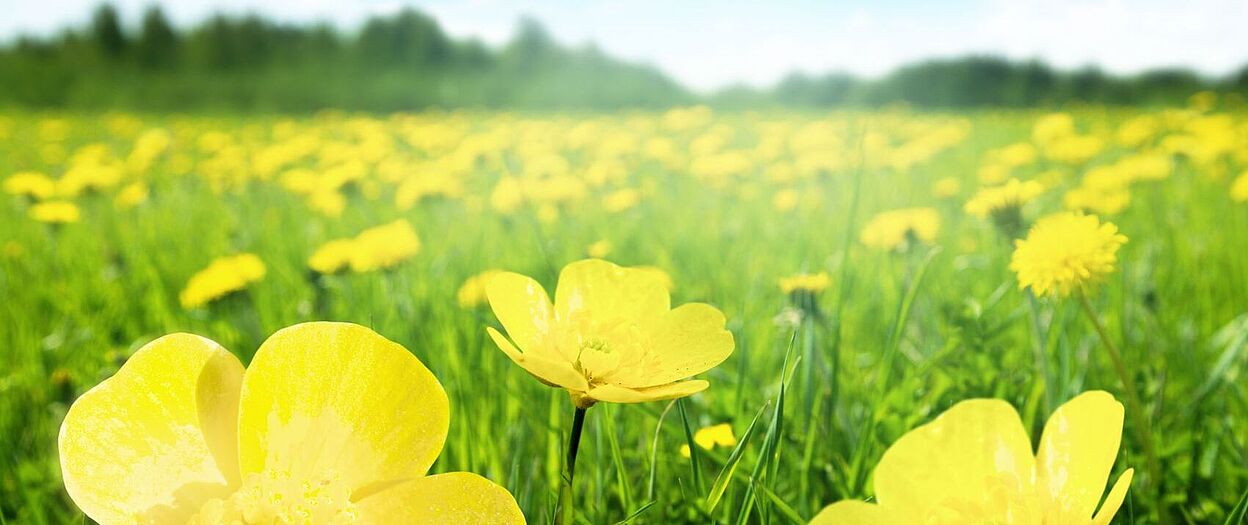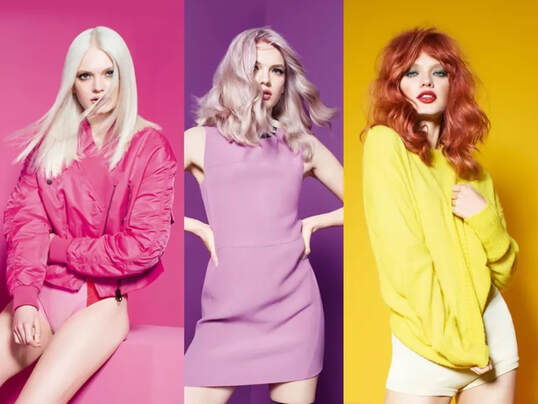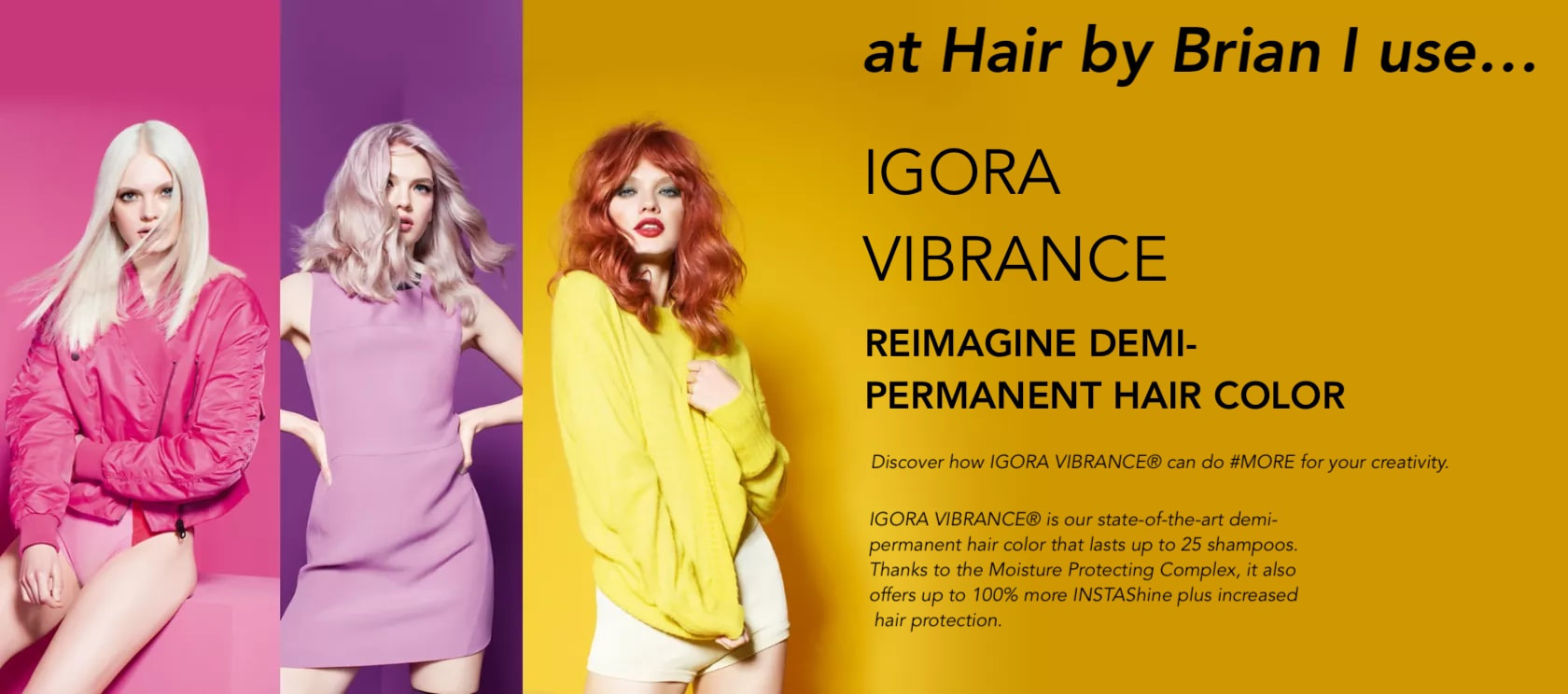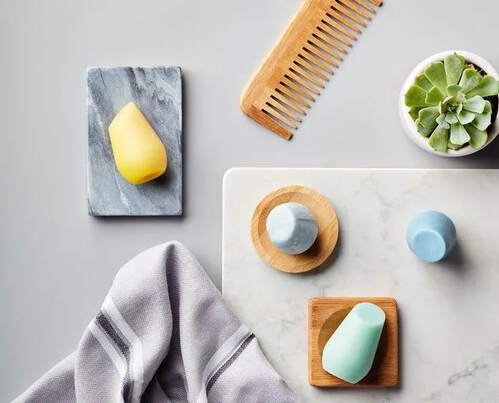|
Only natural ingredients ensure healthy and beautiful hair? Hairdresser and chemist Michael Ahlmeyer investigates the statement. In this day and age, more and more people are looking for natural alternatives in all areas of their lives - including hair care. But while some claim that natural ingredients are the best choice for healthy and beautiful hair, others remain skeptical and regard this as a mere myth. In this article, we're going to take a closer look at natural ingredients in hair care and whether they're really as effective as they say they are. What does science say? Natural ingredients such as aloe vera, coconut oil, plant extracts or jojoba oil have a firm place in numerous hair care products. Proponents of these ingredients say they can moisturize hair, strengthen it, add shine, and even promote hair growth. But what do the scientific facts say about this? It is important to note that not all natural ingredients are created equal. Some studies have shown that certain natural ingredients may actually have beneficial properties for hair. Aloe vera, for example, has moisturizing properties and can help reduce dryness and flaking.Jojoba oil helps regulate sebum production and keep the scalp healthy. The situation is different with plant extracts . In most cases, these serve more to provide a suitable story for product marketing. Often these extracts are only available in homeopathic dosescontained in the product and their actual effect may be questionable. A critical examination of studies on the subject of ingredients in hair cosmetics is of great importance. It is important to review the methodology and validity of the studies, note the independence of the studies, and consider the sample size and reproducibility of the results. The context and applicability of the study results should also be considered. Be critical Another critical consideration concerns the use of essential oils in hair care. Natural rose oil, for example, contains over 500 different ingredients , many of which are potentially allergenic . With synthetic fragrances, on the other hand, there is the possibility of deliberately omitting many of these potential allergens and thus producing a more compatible product. It is important that hairdressers and consumers understand the criticisms and limitations of natural ingredients in hair care. Natural cosmetics can be a good complement, but should not be seen as the sole solution. And be careful: The terms 'Clean Beauty' and 'Green Chemistry' are not proprietary and may lead to misleading marketing claims. Claims such as "Sulfate-free, Paraben-free, Silicone-free" are widespread, although in many cases they are unfair and not allowed: The Claims Regulation clarifies that ingredients that are considered safe, such as parabens, silicones and sulfates, must not be discounted. The focus is on the well-being of the customers As hairdressers, we regularly subject our customers' hair to a variety of chemical and thermal treatments, such as colouring, bleaching, straightening and perming. In this context, it is important to understand that the solution to hair care challenges cannot be found exclusively in natural cosmetics. However, natural cosmetics can be a useful addition for guests in the salon who want to avoid chemical treatments or who are sensitive to certain ingredients. It is crucial that consumers remain critical and do not rely solely on advertising claims. Making an informed decision about hair care products requires looking at different sources and information. Studies are an important aspect, however, one should not only trust individual studies, but also consider other factors such as scientific knowledge, clinical studies and consumer experiences. As hairdressers, we can help our clients choose the right products and treatments according to their individual hair needs. A balanced and differentiated consideration of natural ingredients as well as a critical attitude towards marketing statements are essential. Ultimately, the focus should be on the health and well-being of the customer, and hair care product selection should be based on sound information and individual preferences. from TopHair.de (you may need to translate this site)  Michael Ahlmeyer is a master hairdresser with two salons in Cologne. He develops high-quality hair cosmetics under the brand name "Michael Ahlmeyer" after using the corona pandemic for a correspondence course in chemistry in product development. More information about the products and contact at:michaelahlmeyerpro.com As the demand for environmentally friendly and sustainable products continues to grow, so does the number of brands and businesses that make claims of being "green" or "eco-friendly". This marketing technique, known as greenwashing, can be misleading to consumers and cause harm to the environment. Spa professionals who sell cosmetics must be vigilant in spotting greenwashing and choosing products that are truly sustainable. In this article, we will explore what greenwashing is, the warning signs to look out for, and how to avoid it in cosmetic products. What is Greenwashing? Greenwashing is a marketing technique used by companies to create the impression that their products or services are environmentally friendly or sustainable, when in reality they are not. The term "greenwashing" was coined in the 1980s by environmentalist Jay Westerveld. Companies may use misleading labels, vague or unsubstantiated claims, or manipulative language to create a false impression of their products' sustainability. Greenwashing is a form of deception that can mislead consumers (and spa professionals alike) into thinking they are making environmentally conscious choices, when in reality, they are not. This can lead to negative consequences for the environment, as consumers may continue to buy products that harm the environment, believing they are doing the opposite. Warning Signs of Greenwashing To avoid falling prey to greenwashing, spa professionals must be aware of the warning signs. Some of the most common signs of greenwashing include:
How to Avoid Greenwashing Spa professionals can avoid greenwashing by following these steps:
Unfortunately, greenwashing is a common and deceptive marketing technique that can harm both consumers and the environment. For spa professionals who use and retail cosmetics, it is crucial to be aware of the warning signs of greenwashing and to choose products that are truly sustainable. By doing their research, looking for third-party certifications, and encouraging transparency from companies, spa professionals can help protect their clients and the planet from the negative effects of greenwashing. As consumers become more environmentally conscious and demand more sustainable products, it is likely that the trend of greenwashing will continue. However, by staying vigilant and informed, spa professionals can help promote genuine sustainability in the industry and make a positive impact on the world around us. Let's work together to create a more sustainable future for ourselves and for generations to come. from WellSpa360
No, they didn’t just spell "semipermanent" wrong. Changing your hair color is a surefire way to feel different and fresh. Unless… the color is bad. That new copper hair trend that looks so cute on TikTok isn’t looking as cute on you — and now you’re stuck with it, right? If you used a permanent hair dye, yes. It’ll take a lot of tinting and color correction to get you back to a good spot. You have to add green or blue to neutralize the copper — it’s a whole thing. The process could take months and your hair will be fighting for its life by the time you’re through. Now imagine you used a demipermanent color instead. Rather than trying to neutralize the orange or using ammonia on already bleached hair, that copper color will simply fade away after 24-ish washes. Demipermanent hair color is like semipermanent dye’s cousin that has a bit more staying power. While semipermanent color washes out within a few washes, and permanent color never truly leaves, hairstylist Larry Sims says demipermanent color lasts up to 30 washes, if you’re cool with forgoing super hot showers. Plus, demipermanent dyes don’t contain ammonia, so they won’t damage or permanently alter your hair the way a permanent dye will. It’s the perfect hair-color solution for commitment-phobes, color lovers, and people who frequently proclaim, "I just wanted a change!" — and we should be talking about it more. (Because wow, I wish I knew this was a thing when I tried to self-color-correct an auburn, permanent box dye gone wrong and walked around with splotchy green-brown hair for a year.) Meet the experts:
In this story:
What is demipermanent hair color? Demipermanent hair color is a little more permanent than semipermanent color but less permanent than permanent color. On a scale of "this will never leave your hair" and "washes out instantly," demipermanent falls somewhere in between. It all comes down to a little something I haven’t thought much about since high school: chemistry. "There are many different chemistries that can be used to color hair, and the categories have some overlap," explains cosmetic chemist Kelly Dobos. "Permanent dyes involve the penetration of small color molecules into the hair, which are then converted into larger molecules through a chemical reaction. Those larger molecules become embedded in the hair." In other words, they won’t wash out. Semipermanent dyes, on the other hand, "rely primarily on diffusion of dye into the hair cuticle," says Dobos. "No chemical reactions involved." The dye molecules aren’t embedded in the hair, which means a semipermanent dye will continue to wash out with each shampoo. Demipermanent dyes fall somewhere in between. The magic (er, chemistry) is in the developer. "Developers help open the hair cuticle, allowing dye molecules to penetrate," says Dobos. Depending on the level of developer you use, it can also provide some "lift" or lightening of the hair. "The degree of lift is dependent on the concentration of peroxide in the developer," she continues. "The higher the volume number, the greater the lift." But a low-level developer, like a 10 volume, "allows pigment to deposit with no lift." Okay, chemistry lesson over. Demipermanent dye uses a low-volume, mild peroxide developer (usually a 10 volume developer) to enable color molecules to penetrate and coat the surface layer of the hair cuticle — and just the surface layer. Because of the low concentration of peroxide, it won’t lighten your hair (good news, it won’t damage it either). So it’s not a great choice if you’re hoping to go blonde, but it is a great option for blending uneven color, adding lowlights, toning dull or brassy blondes, or adding richness and shine to any color. That being said, if you already have very dark hair, you’re definitely limited in what you can do with demipermanent color. In this case, blondes do have more fun. The low-level developer gives the demipermanent color some staying power (semipermanent dye is typically applied without any developer), but a demipermanent dye job is only expected to last for about 24 washes before that color coating fades away. Benefits of using demipermanent hair color Colorist Rex Jimieson says demipermanent color has five major benefits over permanent color: "It has no ammonia, it’s easier to grow out, it adds more shine, it’s easier to change later, and it processes quicker." No ammonia means demipermanent color won’t damage or dry out your hair the way permanent color will. And curly girls, rejoice: Demipermanent color won’t alter or damage your curl pattern — it’s totally safe for all hair types. With a demipermanent dye, you’ll still get that obvious "I just dyed my hair" change without the commitment or damage that comes with permanent color. And because that color fades over time, you won’t have to worry about root touch-ups or blending new growth. Your hair should return to its original state after the color washes out entirely. "Permanent color needs touching up every three to six weeks to keep up with hair growth," says Jimieson. "While you might get eight or 12 weeks out of your root line with a demipermanent dye" because it will start to fade — thus, be less noticeably different from your roots — as your hair grows out. So it’s a great option if you’re on a budget or can’t make it to the salon every month. Demipermanent hair color comes in a creme or a liquid — and it can be customized to your color needs. In a liquid state, demipermanent color can be diluted for a more sheer or subtle hue for those who are a bit color shy or looking for a less drastic change. How to use demipermanent hair color Demipermanent hair color can’t lighten your hair, but there are lots of things it can do. Opt for a demipermanent dye if you fall within the below categories:
Demipermanent dye gives you a little more DIY leeway (if things get a little blotchy, it won’t be as obvious and will eventually fade away), but our experts say you should still head to the salon if you’re looking for a demipermanent change. "Demipermanent color can be used at home if you’re amazing at coloring your own hair," says Sims. "Otherwise, I would leave it up to the professionals." How to make demipermanent hair color last Your demipermanent color will wash out eventually — that’s the beauty of it! But you can make it last longer by limiting how often you wash your hair (dry shampoo is your friend) and "use a shampoo line that is color safe," says Jimieson. "Almost anything sold in a salon or prescribed by your colorist or stylist will work." These products are formulated to gently cleanse and condition without stripping the color. On the flip side, if you wound up with a color you hate, you don’t have to live with it for long. You can accelerate the fading process of a demipermanent dye by using a clarifying shampoo — just be sure to follow up with a super moisturizing conditioner because clarifying shampoos can be extremely drying. from Allure
Rosemary Oil and Hair Growth is all the talk these days. Last August I included an article in my newsletter under 3 Hair Trends That Will Be Everywhere This Summer about Rosemary Oil for Hair Growth. Below is the article "Should I Use Rosemary Oil for Hair Growth?" from Healthline.com Should I Use Rosemary Oil for Hair Growth?
Topically applied rosemary oil may help support hair growth and prevent hair loss. But applying too much can cause side effects. Rosemary essential oil and hair Rosemary is a culinary and healing herb. This woody perennial is native to the Mediterranean region, where it’s been used as food and medicine for centuries. Much like oregano, peppermint, and cinnamon, rosemary is frequently found in essential oil form. Essential oils are highly concentrated and distilled extracts of volatile plant compounds. These are used for cooking, cleaning, beauty, health, and other purposes. Rosemary essential oil is a common variety you can purchase and use as a home remedy. The oil’s health uses range from antioxidant benefits and anti-inflammation to memory enhancement and more. In recent years, there have been claims that the oil may be great for hair growth. Some say it could even prevent hair loss, pointing to Mediterranean cultures’ use of rosemary in hair rinses to promote hair growth for hundreds of years as supporting evidence. Can rosemary oil treat hair loss? The idea that rosemary oil encourages hair growth may come from the rosemary’s basic health benefits. The plant in essential oil form is said to:
Like peppermint essential oil (also used to promote hair growth), rosemary essential oil strengthens circulation. As a result, it could prevent hair follicles from being starved of blood supply, dying off, and leading to hair loss. Beyond stimulating hair growth, rosemary essential oil is used to prevent premature graying and dandruff. It may also help dry or itchy scalp. Do studies support the claims? According to some scientific evidence, rosemary may benefit nerve tissue. Carnosic acid, an active ingredient in the plant, healed tissue and nerve damage in one study. This ability to heal nerve endings may rejuvenate nerves in the scalp too, in turn possibly restoring hair growth. More revealing recent studies show that rosemary directly helps protect against hair loss. One 2015 trialTrusted Source pitted the essential oil against minoxidil, commercially known as Rogaine. Both were used on human subjects with androgenetic alopecia (male or female pattern baldness). Results showed that rosemary essential oil was just as effective a minoxidil. During the process, it helped the side effect of itchy scalp more successfully than minoxidil. Another studyTrusted Source of rosemary leaf extract (different from the essential oil) showed it stimulated hair growth. This occurred when hair loss was triggered by testosterone (as in pattern baldness). This study was performed on mice, however. Two separate clinical reviews — one from 2010Trusted Source and one from 2011 — also acknowledge rosemary’s hair growth potential. The former cites a study with successful hair regrowth in people with alopecia who used essential oils. One of these essential oils was rosemary. In the latter review, rosemary essential oil was described as a hair loss restorative. This was due to its circulation-improving effects. How should I use rosemary oil for hair loss? Here are a few ways to try using rosemary essential oil as a hair restorative and thickener. Try any of these treatments one to two times per week to start out. Use them more often when desired or you’ve become comfortable using them. 1. Massage it directly into your scalpAfter mixing about 5 drops of rosemary essential oil with a teaspoon of carrier oil (like jojoba oil or coconut oil), massage evenly into your scalp after bath or shower. Rinsing out the oil afterward is optional — though if you do rinse, let the oil sit on your scalp for at least 5 to 10 minutes beforehand. 2. Mix it into your shampooThis can also apply to conditioners, lotions, or creams. Play it safe and don’t add too much. Keep to about five drops per ounce of product. Afterward, use the product like usual. You can also add 2 to 3 drops directly to any hair product when you apply a dollop of it on your palm before use. 3. Add it to your own homemade shampooThere are many recipes online for a shampoo base. You can also add essential oils for your preferred health and beauty benefits. These may incorporate a mixture of baking soda, coconut oil, essential oil, and possibly other oils. Try this one at Tiny Apothecary. What should I know before using rosemary oil? Avoid getting essential oil in your eyes. If contact occurs, quickly rinse your eyes with cold water. Likewise, be careful not to apply too much to your scalp. Rosemary essential oil has been known to irritate the skin. It may cause discomfort, but no health dangers. To avoid skin irritation, dilute the oil with a carrier oil or other product before applying it. Not enough is known about the safety of using rosemary essential oils while pregnant or breastfeeding. Though using the essential oil for hair loss is only done topically, be cautious — its effects in this regard are still unknown. The bottom line Rosemary has been used by many to promote hair growth successfully. Using rosemary essential oil could very well do the same for you. Science and personal experience together both strongly suggest the essential oil does protect against hair loss, particularly that related to male or female pattern baldness. It may even be effective for alopecia. Rosemary essential oil is a simple remedy that you can use at home, and it may even be competitive with commercial products. What’s more, it’s quite safe when used correctly and yields very few side effects. Can shampoo in a bar really get your hair clean and shiny? Industry professionals explain how the bars can help your hair and, more importantly, the planet. If you think you’re already doing your part to reduce plastic use, take a quick peek inside your shower stall. See those plastic bottles of shampoo and conditioner? No judgment, but ahem.
The good news is there’s another, more eco-friendly way to cleanse that magnificent mane of yours. The growing category of shampoo bars is gaining in popularity with folks who want to do the right thing, but who also want their hair to look its absolute best at all times (so, pretty much everybody). One shampoo bar = Three plastic shampoo bottles Shampoo bars are a small but significant step in our quest to reduce plastic proliferation. The makers of these bars say their products are essentially all the good parts of shampoo (the stuff that gets your hair clean and beautiful) without a bunch of non-essential water added — and with no plastic bottle required. “Liquid shampoo contains 80 to 90% water,” Superzero founder and co-CEO Conny Wittke told HuffPost. “The amount of plastic used in the beauty industry is significant, creating 120 billion units of plastic packaging waste every year globally. In the United States, 552 million plastic shampoo bottles are sold every year. But overall, less than 10% of the plastic we create gets recycled.” Removing the water from shampoo formulations leaves consumers with one small bar that can contain the equivalent of up to three bottles of shampoo, enough for up to 80 washes, depending on the brand. Then there’s the issue of what it takes to get that bottle transported from a factory to your shower stall. “Because you get more product for less weight and volume with shampoo bars, there are fewer greenhouse gases generated during shipping,” Wittke said. How significant is that impact? “One of our shampoo bars has just 8% of the carbon footprint of the equivalent liquid product,”said Brianne West, founder and CEO of . Allison Teasdale, the chief operating officer ofUnwrapped Life, noted: “We’ve diverted more than 4.5 million plastic bottles from entering our oceans, and we’re committed to preventing more than 20 million plastic bottles by 2025.” Is there a shampoo bar in your future? It seems likely. “Everyone who uses shampoo eventually will use them,” said co-founder Dion Hughes. “I foresee a time when using shampoo from plastic bottles is as uncool as lighting a cigarette in a restaurant.” You’ve got to let go of the ‘theater of lather’ You’ll need to manage your expectations with your first few bar uses, starting with the volume of lather you’re likely to see. There’s a “theater of lather” that we’ve come to expect from our cleansing products, but the additives that provide a rich lather aren’t necessarily proof of super-deep cleaning. “Lather is not so much a cleansing effect as a reassuring effect,” Hughes said. “You’ll notice that your shampoo bar will suds up, but it’s not like the kind of foam you see in a beer commercial, more just a creamy lather,” Shambar founder Jeffrey Qaiyum told HuffPost. “If you’re getting that much foam from a shampoo bar, frankly, you’re using a bar of soap with the word ‘shampoo’ slapped on the label.” It might take some getting used to How that small, hard bar will translate into a good shampoo might seem confusing at first, but after a few tries, you’ll get the hang of it. “Just swoosh the entire bar around on your head,” said Erica Vega, brand and product expert for Lush Cosmetics USA . “If your hair is prone to tangles, rub it in your hands first, then rub the lather in, the way you would do with a liquid shampoo.” After rinsing and drying, your hair might look a little different than the way it does after a traditional shampoo, at least at first. Shampoo bars tend to be gentler than shampoo, so you’ll need to let your hair adjust to that milder cleansing, or you might eventually need to switch up the timing and frequency of your shampoos. “For some people, it takes two to three weeks to ‘break in’ and let the hair become normalized after years of having natural oils stripped away by shampoos,” said James R. Liggett, president and founder of J. R. Liggett’s. What about conditioner? Whether you’ll need a conditioner bar is a matter of your particular hair type. Someone with short hair might be just fine, but those with thicker, longer or curlier hair might want to use one. “Many people with curly hair choose not to use shampoo in favor of co-washing, which is washing with conditioner,” West said. She noted that those products also have eco-benefits. “One of our conditioner bars is equivalent to five bottles of liquid conditioner,” she added. Travel, shave and even wash the dog with your shampoo bar Because of their compact size, shampoo bars make sense for travel. They eliminate worries about Transportation Security Administration requirements because — ta-da! — you’ve ditched the liquid altogether. Whether you’re staying at a luxury hotel or at a campsite, you’ll also find that a shampoo bar is a good in-a-pinch way to care for hand-washable clothing when you’re on the road. People can use the bars on their entire bodies, or as a replacement for shaving cream. And you can break them out when it’s time to wash pets, too. No matter what you’re doing with your own particular bar, “They’re absolutely gentle enough to use every day,” Qaiyum said. For more of this story, click here and scroll down to Shampoo bars to try |
Hair by BrianMy name is Brian and I help people confidently take on the world. CategoriesAll Advice Announcement Awards Balayage Barbering Beach Waves Beauty News Book Now Brazilian Treatment Clients Cool Facts COVID 19 Health COVID 19 Update Curlies EGift Card Films Follically Challenged Gossip Grooming Hair Care Haircolor Haircut Hair Facts Hair History Hair Loss Hair Styling Hair Tips Hair Tools Health Health And Safety Healthy Hair Highlights Holidays Humor Mens Hair Men's Long Hair Newsletter Ombre Policies Procedures Press Release Previous Blog Privacy Policy Product Knowledge Product Reviews Promotions Read Your Labels Recommendations Reviews Scalp Health Science Services Smoothing Treatments Social Media Summer Hair Tips Textured Hair Thinning Hair Travel Tips Trending Wellness Womens Hair Archives
May 2025
|
|
Hey...
Your Mom Called! Book today! |
Sunday: 11am-5pm
Monday: 11am-6pm Tuesday: 10am - 6pm Wednesday: 10am - 6pm Thursday: By Appointment Friday: By Appointment Saturday: By Appointment |






 RSS Feed
RSS Feed